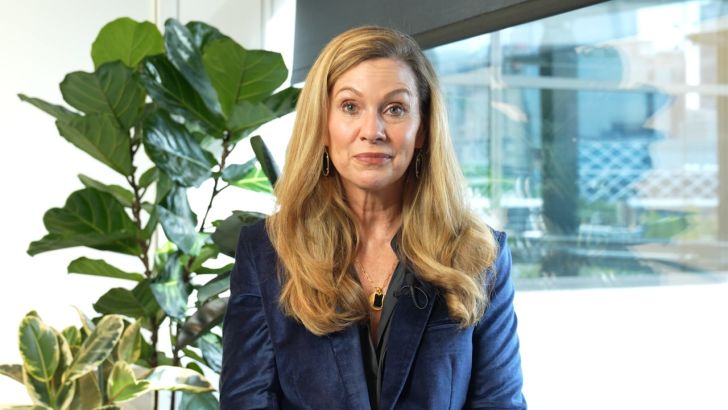Wage Growth Holds at 3.4% as Public Sector Outpaces Private for Third Straight Quarter
This piece is freely available to read. Become a paid subscriber today and help keep Mencari News financially afloat so that we can continue to pay our writers for their insight and expertise.
Today’s Article is brought to you by Empower your podcasting vision with a suite of creative solutions at your fingertips.
Australian wages rose 3.4% in the year to September, holding steady from the previous quarter but marking a slowdown from last year’s pace, as public sector pay increases continued outstripping private sector gains for the third consecutive quarter, new government data showed Wednesday.
The Wage Price Index climbed 0.8% in the September quarter 2025, matching growth rates from both the June quarter this year and the same period in 2024, according to the Australian Bureau of Statistics.
“Annual wage growth to the September quarter 2025 was 3.4 per cent,” said Michelle Marquardt, ABS head of prices statistics. “Annual wage growth remained steady compared to the June quarter 2025 but was slightly lower than this time last year.”
The figures reveal a widening gap between government and private sector compensation, with state government pay rises driving the bulk of public sector wage increases while private employers delivered smaller and less frequent raises than a year earlier.
Truth matters. Quality journalism costs.
Your subscription to Mencari directly funds the investigative reporting our democracy needs. For less than a coffee per week, you enable our journalists to uncover stories that powerful interests would rather keep hidden. There is no corporate influence involved. No compromises. Just honest journalism when we need it most.
Not ready to be paid subscribe, but appreciate the newsletter ? Grab us a beer or snag the exclusive ad spot at the top of next week's newsletter.
Public Sector Dominates Wage Growth
Public sector wages rose 0.9% in the September quarter, outpacing the 0.7% increase in private sector compensation, continuing a trend that began three quarters ago.
Annual public sector wage growth reached 3.8% in the year to September, edging up slightly from 3.7% at the same time last year and significantly ahead of the private sector’s 3.2% annual increase.
State government compensation accounted for the overwhelming majority of public sector wage momentum this quarter.
“State government pay rises contributed 82 per cent of public sector wage growth this quarter,” Marquardt said.
The contribution reflects both the size of state government workforces and total wage expenditure, as well as the magnitude of pay increases approved during the period.
On both quarterly and annual measures, public sector wages have now grown faster than private sector compensation for three straight quarters, marking a sustained divergence in compensation trends between government and private employment.
Private Sector Wage Increases Slow
Private sector wage growth weakened compared to the previous year, with annual increases of 3.2% falling short of the 3.5% growth recorded in the year to September 2024.
The slowdown reflected both fewer workers receiving pay raises and smaller increases when adjustments did occur.
“This September quarter, 47 per cent of private sector jobs saw a change in their wages compared to 49 per cent in the same quarter last year,” Marquardt said.
Workers who did receive raises saw smaller bumps than their counterparts a year earlier. The average size of hourly wage increases in the private sector reached 3.6% in September quarter 2025, down from 3.9% in the same period in 2024.
The declining frequency and magnitude of private sector wage adjustments suggests employers remain cautious about compensation costs amid ongoing economic uncertainty, though wage growth continues at levels well above the pandemic-era lows.
Fair Work Decision Impacts September Results
The September quarter wage growth incorporated the Fair Work Commission’s Annual Wage Review decision, which awarded a 3.5% increase effective July 1, 2025.
The commission’s 2025 decision represented a smaller raise than the 3.75% awarded in 2024, contributing to the overall moderation in wage growth compared to the previous year.
The Fair Work Commission’s annual wage decisions affect minimum wage rates and award wages covering millions of Australian workers, particularly in lower-paid sectors where award rates set the floor for compensation.
Quarterly Growth Remains Consistent
Despite the year-over-year slowdown in annual wage growth, quarterly increases have remained remarkably stable over the past year.
The 0.8% quarterly increase in September 2025 matched both the June quarter 2025 result and the September quarter 2024 figure, suggesting wage growth has settled into a steady rhythm after the sharper acceleration seen in 2022 and early 2023.
The consistency in quarterly figures across both public and private sectors indicates wage pressures have stabilized rather than continuing to accelerate or declining sharply.
Private sector quarterly wage growth of 0.7% in September matched the pace from earlier quarters, while the public sector’s 0.9% quarterly increase similarly aligned with recent patterns.
State Government Drives Public Sector Gains
The dominance of state government compensation in driving overall public sector wage growth reflects both the large workforce employed at the state level and significant pay agreements reached during the quarter.
State governments employ hundreds of thousands of workers across education, health, emergency services, and public administration sectors, making their compensation decisions a major driver of overall wage trends.
The 82% contribution from state government pay rises to overall public sector wage growth this quarter represents a substantial concentration, with federal and local government compensation changes accounting for the remaining 18%.
By level of government, the contribution breakdown reflects not only the number of employees at each level but also the timing and size of wage agreements implemented during the September quarter.
Annual Growth Comparison Shows Modest Decline
The 3.4% annual wage growth in the year to September 2025 came in slightly below the previous year’s pace, though precise year-earlier comparison figures were not specified in the latest release.
The annual figure represents the cumulative effect of four quarters of wage changes across all sectors and industries, providing a broader measure of compensation trends than quarterly snapshots.
With annual growth holding steady from the June quarter 2025 at 3.4%, the year-over-year comparison shows wage increases have plateaued rather than continuing to accelerate or falling more sharply.
The moderation from last year’s levels suggests the peak of post-pandemic wage growth has passed, with compensation increases settling at more sustainable long-term rates.
Sector-by-Sector Divergence Continues
The persistent gap between public and private sector wage growth over three consecutive quarters marks a notable shift from historical patterns where the two sectors often moved in closer alignment.
Public sector annual wage growth of 3.8% compared to private sector growth of 3.2% represents a gap of 0.6 percentage points, with the difference driven by both faster quarterly increases and higher year-over-year momentum in government employment.
The divergence may reflect different economic pressures and labor market conditions facing government versus private employers, with state budgets supporting public sector wage agreements while private businesses remain more cautious.
Seasonally adjusted figures for both sectors show the public sector consistently delivering higher quarterly increases than private employment over the past three measurement periods.
Wage Change Frequency Declines
Beyond the size of wage increases, the proportion of private sector workers receiving any pay adjustment also declined compared to the previous year.
With 47% of private sector jobs seeing wage changes in September quarter 2025 compared to 49% a year earlier, fewer workers experienced compensation adjustments even as those who did receive raises still saw meaningful increases.
The declining frequency of wage changes suggests some employers are extending the intervals between pay reviews or limiting raises to fewer employees, potentially reflecting cost management priorities.
The two percentage point decline in the share of jobs receiving wage changes, while modest, affects hundreds of thousands of workers across the private sector labor market.
Implications for Workers and Economy
The steady 3.4% annual wage growth continues outpacing inflation in recent quarters, providing real income gains for Australian workers after years of wages lagging price increases.
However, the slowdown in private sector wage growth and the declining frequency of pay raises indicate tightening labor market conditions may be moderating employer willingness to boost compensation.
The public-private sector divergence creates different economic experiences for government versus private sector workers, with state government employees seeing stronger wage momentum while private sector employees face more modest and less frequent increases.
The Fair Work Commission’s decision to award a smaller minimum wage increase in 2025 compared to 2024 signals official recognition that wage pressures have moderated from earlier peaks.
With quarterly wage growth holding steady at 0.8% while annual growth edges down slightly, the data suggests Australia’s wage dynamics are stabilizing at sustainable levels after the post-pandemic surge.
The ABS released the comprehensive wage data Wednesday as part of its quarterly Wage Price Index report tracking compensation trends across sectors, industries and regions throughout Australia.
Sustaining Mencari Requires Your Support
Independent journalism costs money. Help us continue delivering in-depth investigations and unfiltered commentary on the world's real stories. Your financial contribution enables thorough investigative work and thoughtful analysis, all supported by a dedicated community committed to accuracy and transparency.
Subscribe today to unlock our full archive of investigative reporting and fearless analysis. Subscribing to independent media outlets represents more than just information consumption—it embodies a commitment to factual reporting.
As well as knowing you’re keeping Mencari (Australia) alive, you’ll also get:
Get breaking news AS IT HAPPENS - Gain instant access to our real-time coverage and analysis when major stories break, keeping you ahead of the curve
Unlock our COMPLETE content library - Enjoy unlimited access to every newsletter, podcast episode, and exclusive archive—all seamlessly available in your favorite podcast apps.
Join the conversation that matters - Be part of our vibrant community with full commenting privileges on all content, directly supporting The Evening Post (Australia)
Catch up on some of Mencari’s recent stories:
It only takes a minute to help us investigate fearlessly and expose lies and wrongdoing to hold power accountable. Thanks!









